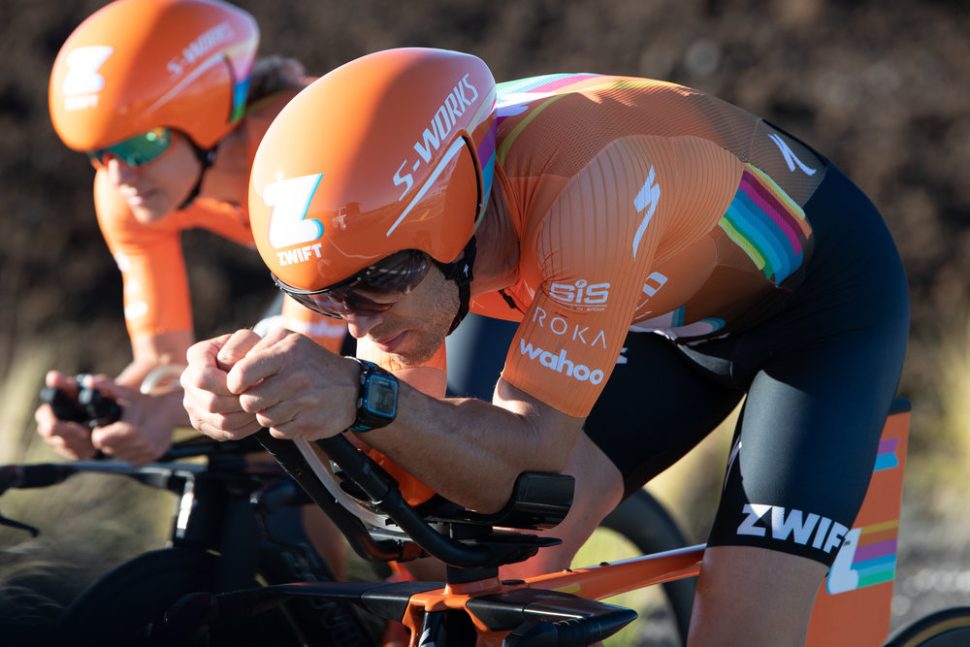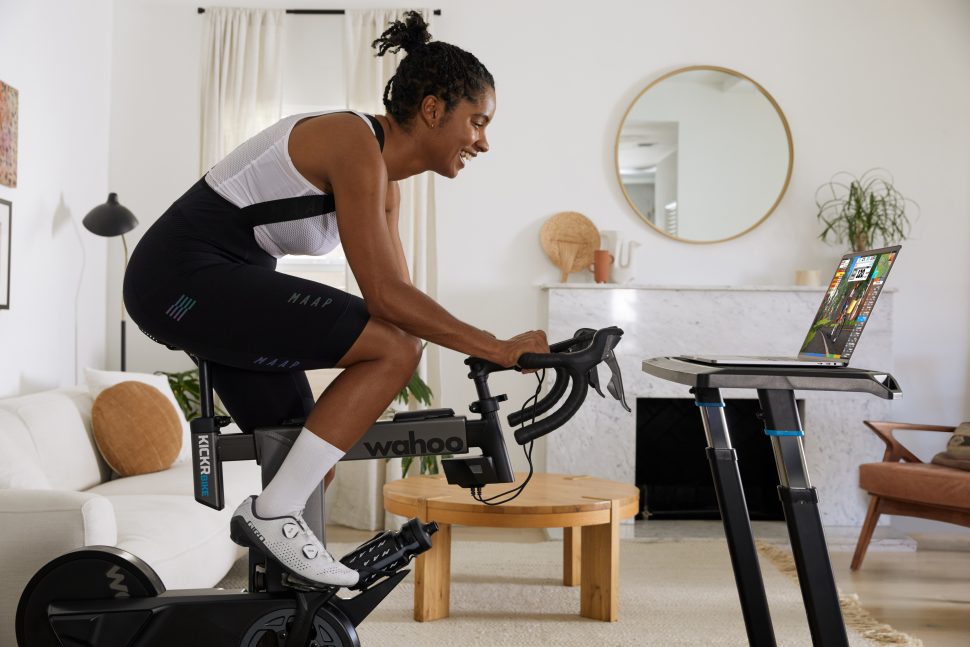Cyclist
How indoor training on Zwift powers the professionals
Pro cyclists live an entirely different training life to the likes of us, right? Well, you’d be surprised. Here, Stephen Gallagher, co-director of coaching firm Dig Deep Coaching, spills the beans on how even the world’s best riders use indoor training for many aspects of their preparations.
Since 2011, Gallagher, alongside co-director Dan Fleeman and their firm’s worldwide network of coaches, has coached thousands of riders, including many national and world champions. The duo are currently the heads of performance for WorldTour team Canyon-SRAM, so they know what it takes to compete at the highest level. Gallagher takes up the story on how his pro riders train better – and smarter – indoors…
Extracting the cleanest data
‘There are strategic ways pro riders use indoor training, and a lot of the ethos is similar to what the general riding public would do,’ Gallagher says.
‘A lot of this is around specificity of training. If you’re looking to hit specific energy systems, and measure progress, it allows a coach and a rider to see what’s working by taking out the environmental aspect.

‘So, for example, when you want to do a four-minute rep in the Yorkshire hills, where it’s raining one day, sunny the next, you might have had a flat on your warm-up… it can affect how you approach the workout. But if you strip that away, and do it on an indoor trainer, all that’s left is the overlay of the intensity, and when that’s your only thing to worry about it’s really easy for us, as coaches, to compare that workout week in, week out, and see the progress in a very “sterile” environment.
‘Plus, the rider didn’t have to worry about cars interrupting them, changes of temperature, slowing down for junctions. The data ends up being very clean and easier to use.’
Controlling the environment
‘Using indoor training, we can create a specific environment to train in, specifically with heat,’ Gallagher says. ‘We do a lot of work with our riders for heat adaptation and how to perform in the heat.

‘If you train outside, you can control the heat to an extent, but with a controlled indoor environment, pro riders can do that, manipulating the temperature, the airflow, the intensity of the training, even changing what they wear… and we can monitor riders with core body sensors. We can strain and stress their bodies in a controlled manner.’
Building endurance
‘A lot of people associate indoor training with intensity. Whenever you say, “OK, I’m going to ride on Zwift”, the first thing that pops into your head is probably one hour of intensity. But I have a number of riders who’ll ride on Zwift for three or four hours, and really enjoy it.
‘It’s a way of getting in a really good aerobic threshold ride; what we might call a “zone 2” effort. It’s ideal doing this indoors because you’re never off the pedals, you’re never coasting. Doing a zone 2 ride outdoors, it’s very easy for the intensity level to fluctuate, due to hills, sprinting out of corners, riding in a group, etc.

‘With certain riders, we have them doing double days of endurance riding indoors – two hours in the morning then another two in the afternoon. The body’s response to that can be better than if you were riding outside for four hours.’
Community and familiarisation
‘It’s very easy these days to get a community feel from Zwift, for example, where you can go on a group ride indoors, do a meet with another rider – it’s changed the game. Canyon-SRAM riders hook up together on Zwift, and the team does rides on the platform where the public can join in, too.
‘Also, when you see all the teams warming up for a race, or a time trial, they’re all on their turbo trainers, so we practise those warm-ups beforehand, so it’s a familiar sensation when they get to race day – it’s not a shock to them.

‘And if you regularly do the same warm-up before a lot of sessions, you can track the differences in response to heart rate, power, perceived exertion… and that is a very important data capture for a coach – that consistency of seeing how an athlete felt in a certain situation. Even in something as simple as a 15-minute warm-up, with the data captured in a sterile environment.’
Bouncing back from injury
‘I have a rider right now who’s one of our best riders. She’s currently using her turbo trainer daily as part of her rehab, to be able to control the training load in a strategic way, with the frequency of the training – so, with smaller blocks of 20 minutes on an indoor trainer, followed by rest, sleep, eat… then another 20-block,’ Gallagher says.
‘It’s easy because you can do it indoors, and if the injury starts to show signs of causing problems, you can shut off the trainer and get off. By upping the frequency of shorter sessions, rather than doing one- or two-hour sessions, you’re lowering the risk of overloading the body.
‘We’re delivering the training stimulus that we want, but because we’re doing it indoors, we’re delivering it in a safer manner. I’ve used this method with many athletes coming back from injury.’

The pros of the future…
As coaches, we’re always looking at talent on Zwift – with the Zwift Academy being the main route. But if we see potential in someone on the platform, if somebody comes to light, then it’s a way for riders to show themselves – to use it as a talent platform, and for us to see riders who are coming through the ranks.
‘It’s a bit like Strava – someone noticed Jonas Vingegaard on there, and he went on to win the Tour de France.
‘We always want to capture hidden talent, and if you’ve got a platform that’s bringing tens of thousands of riders to a public setting, then there’s a great opportunity to get yourself noticed.’
The post How indoor training on Zwift powers the professionals appeared first on Cyclist.